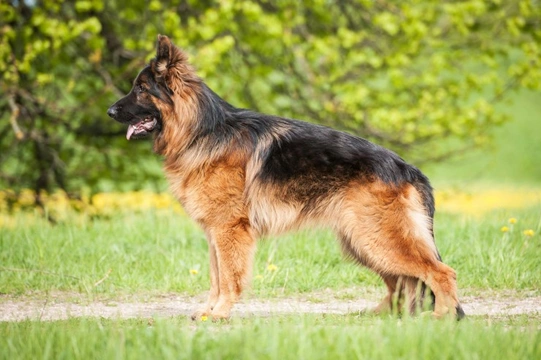
Dealing with your German shepherd’s coat shedding cycle
While there are some breeds of dog that have single layered, short fine fur that barely sheds, and others that have a so-called non-shedding coat that doesn’t really lose its loose fur at all, the German shepherd is not one of them! When it comes to shedding fur, the German shepherd is one of the biggest fluff-balls of them all, and keeping things in check without losing your sanity (or your carpet under a layer of fluff!) can be a challenge.
In this article, we will look at some of the best ways to handle your GSD’s coat shedding, minimise the mess, and keep everything under control! Read on to learn more about dealing with your German shepherd’s coat shedding cycle.
The shedding cycle
In order to get to grips with your dog’s coat shedding, it is important first of all to understand the cycle that the hair goes through, and in order to understand this, you first need to understand the German shepherd coat.
German shepherds have what is known as a double layered coat, meaning that they have a top layer of long, harsher guard hairs, and underneath this they grow a whole other layer of soft, dense and thick shorter hair that helps to trap heat and provide insulation.
Both the top layer and the undercoat will shed some hair on a daily basis as part of the natural lifecycle of the hair’s follicles, and this will generally happen all year round.
Additionally, twice a year when the seasons change (spring and autumn) your dog will go through an intense full shed where they lose the entire undercoat over a short period of time (a couple of weeks usually) in order to grow in the right coat for the coming season. This is known as blowing the coat, and while the regular daily coat shedding can be challenging in itself, it all kicks into high gear when your dog is going through a full shed of the undercoat!
Your dog’s diet
First of all, feeding your dog a high quality diet will go a long way towards keeping their skin and coat healthy, and supporting their natural shedding cycle. If your dog’s diet is not really a good fit for them, this can lead to a dull, dry coat that is more likely to shed hair, and will make it harder to keep the shedding under control at what can be quite a challenging time anyway!
Preparing for a coat blow
It is a good idea to keep a note of the dates when your dog really starts shedding their coat in earnest each year, so that you can be better prepared to manage it. Obviously, the seasons and how warm or cool the year is will have an impact on when and how heavily your dog starts to shed, but you can get a head start on things if you have at least a rough idea of when things are going to start to get fluffy!
Brushing, plucking and combing
It is wise to brush your German shepherd a couple of times a week (or more often for longhaired German shepherds) throughout the year, to keep their general shedding under control and also, to get them used to being brushed and groomed so that they are more tolerant of it when you really need to keep their shedding in check.
Invest in some tools that suit your dog’s coat, such as a rake brush to get right down to the undercoat, a comb, and anything else that you find effective. When brushing and grooming your dog, it is important to get right down to the skin and comb through the undercoat as well-just brushing the top layers will not do anything for the undercoat!
Additionally, when your dog is losing their undercoat quickly, you will begin to see patches of fur that stand proud or otherwise stand out, which indicates patches of loose or shed hair-these can simply be plucked out with your fingers prior to brushing, although you will probably want to do this outside to minimise the mess in the house!
Bathing
Giving your dog a bath every couple of months will help to keep their skin and coat in good condition, and help to remove shed hair. When it comes to the time of year that your dog is blowing their coat, waiting until they have lost most of their undercoat before bathing is usually the most sensible option, as bathing can help to finish off the shed and reduce the mess.
Hair around the house
However vigilant you are about keeping on top of your dog’s coat shedding, hair around the house is something that you will soon learn to live with! Grooming your dog regularly can help to minimise the fur around the home, and using a good vacuum cleaner that is designed to pick up pet hair is also wise, as picking up hair before it has the chance to work its way into your carpet and soft furnishings is strongly recommended!
When your dog is shedding heavily, you may also want to restrict their access to bedrooms and rooms with lots of soft furnishings, to make everything a little easier!



